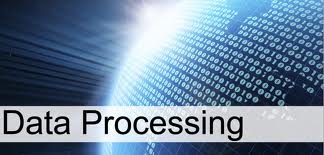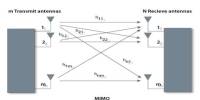Processing Operations:
The explanation of all processing operations and concepts are given below:
Editing: Editing of data is a process of examining the collected raw data to detect errors and omissions and to correct these when possible. As a matter of fact, editing involves a careful security of the completed questionnaires and/or schedules. Editing is done to assure that the data are accurate, consistent with other facts gathered, uniformly entered, as completed as possible and have been well arranged to facilitate coding and tabulation.
With regard to points or stages at which editing should be done, one can talk of field editing and central editing. Field editing consists in the review of the reporting forms by the investigator for completing what the letter has written in abbreviated and/or in illegible form at the time of recording the respondents’ responses. This type of editing in necessary in view of the fact that individual writing styles often can be difficult for others to decipher. This sort of editing should be done as soon as possible after the interview, preferably on the very day or on the next day. While doing field editing, the investigator must restrain himself and must not correct errors of omission by simply guessing what the informant would have said if the question had been asked.
Central editing should take place when all forms or schedules have been completed and returned to the office. This type of editing implies that all forms should get a through editing by a single editor in a small study and by a team of editors in case of a large inquiry. Editor(s) may correct the obvious errors such as an entry in the wrong place, entry recorded in months when it should have been recorded in weeks, and the like. In case of inappropriate on missing replies, the editor can sometimes determine the proper answer by reviewing the other information in the schedule. At times, the respondent can be contacted for clarification. The editor must strike out the answer if the same is inappropriate and he has no basis for determining the correct answer or the response. In such a case an editing entry of ‘no answer’ is called for. All the wrong replies, which are quite obvious, must be dropped from the final results, especially in the context of mail surveys.
Coding: Coding refers to the process of assigning numerals or other symbols to answers so that responses can be put into a limited number of categories or classes. Such classes should be appropriate to the research problem under consideration. They must also possess the characteristic of exhaustiveness and also that of mutual exclusively which means that a specific answer that can be placed in one and only one cell in a given category set. Another rule to be observed is that of unidimensionality by which is meant that every class is defined in terms of only one concept.
Classification: Most research studies result in a large volume of raw data which must be reduced into homogenous groups if we are to get meaningful relationships. This fact necessitates classification of data which happens to be process of arranging data in groups or classes on the basis of common characteristics are placed in one class and in this way the entire data get divided into a number of groups or classes. Classification can be one of the following two types, depending upon the nature of the phenomenon involved:
- Classification according to attributes: As stated above, data are classified on the basis of common characteristics which can either be descriptive or numerical.
- Classification according to class-intervals: Unlike descriptive characteristics, the numerical characteristics refer to quantitative phenomenon which can be measured through some statistical units. Data relating to income, production, age, weight, etc. come under this category. Such data are known as statistics of variables and are classified on the basis of class intervals. Classification according to class intervals usually involves the following three main problems:
01. How many classes should be there? What should be their magnitudes?
02. How to choose class limits?
03. How to determine the frequency of each class?
Tabulation: When a mass of data has been assembled, it becomes necessary for the researcher to arrange the same in some kind of concise and logical order. The procedure is referred to as tabulation. Thus, tabulation is the process of summarizing raw data and displaying the same in compact form for further analysis. In a broader sense, tabulation is an orderly arrangement of data in columns and rows.
Tabulation is essential because of the following reasons:
- It conserves space and reduces explanatory and descriptive statement to a minimum
- It facilitates the process of comparison.
- It facilitates the summation of items and the detection of errors and omissions.
- It provides a basis for various statistical computations.
Generally accepted principles of tabulation: Such principles of tabulation, particularly of constructing statistical tables, can be briefly states as follows:
- Every table has a clear, concise and adequate title so as to make the table intelligible without reference to the text and this title should always be placed just above the body of the table.
- Every table should be given a distinct number to facilitate easy reference.
- The column headings and the row headings of the table should be clear and brief.
- The units of measurement under each heading or sub-heading must always be indicated.
- Explanatory footnotes, if any, concerning the table should be placed directly beneath the table, along with the reference symbols used in the table.
- Source or sources from where the data in the table have been obtained must be indicated just below the table.
- Usually the columns are separated from one another by lines which make the table more readable and attractive. Lines are always drawn at the top and bottom of the table and below the captions.
- There should be thick lines to separate the data under one class from the data under another class and the lines separating the sub-divisions of the classes should be comparatively thin lines.
- The columns may be numbered to facilitate reference.
- Those columns whose data are to be compared should be kept side by side. Similarly, percentages and/or averages must also be kept close to the data.
Some problems of processing data:
We can take up the following two problems of processing the data for analytical purpose:
a) The problem concerning “Don’t know” (or DK) responses: While processing the data, the researcher often comes across some responses that are difficult to handle. One category of such responses may be “Don’t Know Response’ or simply DK response. When the DK response group is small, it is of little significance.
b) Use or percentages: Percentages are often used in data presentation for they simplify numbers, reducing all of them to a 0 to 100 range. Through the use of percentages, the data are reduced in the standard form with base equal to 100 which fact facilitates relative comparisons. While using percentages, the following rules should be kept in view by researchers:
01. Two or more percentages must not be averaged unless each is weighted by the group size from which it has derived.
02. Use of too large percentages should be avoided, since a large percentage is difficult to understand and tends to confuse, defeating the very purpose for which percentages are used.
03. Percentages hide the base from which they have been computed. If this is not kept in view, the real differences may not be correctly read.
04. Percentage decreases can never exceed 100 percent and as such for calculating the percentage of decrease, the higher figure should invariably be taken as the base.
05. Percentages should generally be worked out in the direction of the casual-factor in case of two-dimension tables and for this purpose we must select the more significant factor out of the two given factors as the casual factor.
Elements of Analysis: As stated earlier, by analysis we mean the computation of certain indices or measures along with searching for patterns of relationship that exist among the data groups. Analysis, particularly in case of survey or experimental data, involves estimating the values of unknown parameters of the population and testing of hypothesis for drawing inferences. Analysis may, therefore, be categorized as descriptive analysis and inferential analysis. We may as well talk of correlation analysis and casual analysis. Correlation analysis studies the joint variation of two or more variables for determining the amount of correlation between two or more variables. Casual analysis is concerned with the study of how one or more variables affect changes in another variable. It is thus a study of functional relationships existing between two or more variables.
In modern times, with the availability of computer facilities, there has been a rapid development of multivariate analysis which may be defined as “all statistical methods which simultaneously analyze more than two variables on a sample of observations. Usually the following analyses are involved when we make a reference of multivariate analysis:
- Multiple regression analysis: This analysis is adopted when the researcher has one dependent variable which is presumed to be a function of two or more independent variables.
- Multiple discriminate analysis: This analysis appropriate when the researcher has a single dependent variable that cannot be measured, but can be classified into two or more groups on the basis of some attribute.
- Multivariate analysis of variance (or multi-ANOVA): This analysis is an extension of two way of ANOVA, wherein the ratio of among group variance to within group variance is worked out on a set of variables.
- Canonical analysis: This analysis can be used in case of both measurable and non-measurable variables for the purpose of simultaneously predicting a set of dependent variables from their joint covariance with a set of independent variables.
Report writing
After collecting and analyzing the data, the researcher has to accomplish the task of drawing inferences followed by report writing. This has to be done very carefully, otherwise misleading conclusions may drawn and the whole purpose of doing research may get vitiated. It is only through interpretation that the researcher can expose relations and processes that underlie his findings. In case of hypotheses testing studies, if hypotheses are tested and upheld several times, the researcher may arrive at generalization. But in case researcher had no hypotheses to start with, he would try to explain his findings on the basis of some theory. This may at times result a new questions, leading to further researches. All this analytical information and consequential inferences may well be communicated, preferably through research report.
SIGNIFICANT OF REPORT WRITING
Research report is considered, as a major component of research study for the research task remains incomplete till the report has been presented and written. As a matter of fact even the most brilliant hypotheses, highly well designed and conducted research study, and the most striking generalization and findings are of little value unless they effectively communicated to others. Writing of report is the last step in the research study and requires a set of skill some what different from those called for in respect of the earlier stages of research. This task should be accomplished by the researcher with utmost care; he may seek the assistance and guidance of experts for the purpose.
DIFFERENT STEPS IN WRITING REPORT
The usual steps involved in writing report are:
Logical analysis of the subject-matter;
Preparation of the final outline;
Preparation of the rough draft;
Rewriting and polishing;
Preparation of the final reference;
Writing the final draft.
THE PRELIMINARY PAGES
Getting the problem clearly in mind is largely a matter of gathering all the information needed to understand it and then applying our best logic to it. Gathering the right information involves many things, depending on the problem. It may mean gathering material from company files, talking over the problem with experts, searching through print and electronic sources, and discussing the problem with those who authorized the report. In general, we should continue this preliminary investigation until we have the information we need to understand our problem.
NEED FOR A CLEAR STATEMENT OF THE PROBLEM
After we understand our problem, our next step is to state it clearly. Writing the problem statement is good practice for several reasons. A written statement is preserved permanently. Thus, you may refer to it time and again. In addition, a written statement can be reviewed, approved, and evaluated by people whose assistance may be valuable. Most important of all putting the problem in writing forces us to think it through.
The problem statement normally takes one of three forms: infinitive phrase, question , or declarative statement. To illustrate each, we will use the problem of determining why sales at a certain store have declined:
Infinitive phrase: ‘To determine the causes of decreasing sales at Store X.’
Question: ‘What are the causes of decreasing sales at store X’?
Declarative statement: ‘Store X sales are decreasing, and management wants to know why.
DETERMINING THE FACTORS
After starting the problem, we determine what needs to be done to solve it. Specifically, we look for the factors of the problem. That is we determine what subject are as we must to look into solve the problem.
Problem factors may be on three types.
1st they may be subtopic of the overall subtopic of the overall topic about which the report is concerned.
2nd, they may be hypotheses that must be tasted.
3rd, in problems that involve comparisons, they may be the bases on which the comparisons are made.
USE OF SUBTOPICS IN INFORMATION REPORTS
If the problem concerns a need for information, our mental effort should produce the main areas about which information is needed. Illustrating this type of situation is the problem of preparing a report that reviews Company X’s activities during the past quarter. Clearly, this is an informational report problem-that is, it requires no analysis, no conclusion, no recommendation. It only requires that information be presented. The mental effort in this case is concerned simply with determining which determining which sub divisions of the overall topic should be covered. After thoroughly evaluating the possibilities, might come up with something like this analysis:
Problem statement: To review operations of company X from January 1 through March 31.
Subtopic:
Production
Sales and promotion
Financial status
Computer systems
Product development
Human resources
HYPOTHESIS FOR PROBLEMS REQUIRING SOLUTION
Some problems concerns why something bad is happening and perhaps how to correct it. In analyzing problems of this kind, we should seek explanations or solutions. Such explanations or solutions are termed hypothesis. Once formulated, hypothesis are tested, an there applicability to the problem is either proved or disproved.
To illustrate, assume that we have the problem of determining why sales at a certain store have declined. In preparation to investigate this problem, we would think of the possible explanation(hypothesis) for the declining. Our task would be one of studying, weighing, and selecting, and we would brainstorm such explanations are these:
Problem statement: Sales are the Springfield store have declined, and management wants to know why?
Hypothesis
Activities of the competition have caused the decline.
Changes in the economy of the area have caused the decline.
Merchandising deficiencies have caused the declining.
Changes in the environment (population shifts, political action, etc) have caused the decline.
In the investigation that follows, we would test these hypotheses. We might find that one, two, or all apply. Or we might find that none is valid. If we so we would have to advance additional hypotheses for further evaluation.
GATHERING THE INFORMATION NEEDED
For most business problems, we need to investigate personally. A production problem, for example, might require gathering and reviewing the company’s production records. A sales problem might require collecting information through discussions with customers and sales personnel. A computer problem might require getting product information, finding prices, compiling performance statistics, and so on. Such a personal investigation usually requires knowledge of our field of work, which is probably why we were assigned the problem.
In some cases, we may use library and online research to find the information we need. Perhaps we have a good working knowledge of the techniques of research. To present facts from published sources in reports, we will need to use still other techniques: constructing a bibliography, citing references, quoting, paraphrasing, and so on. These techniques are covered in Appendix E.
With the computer, we can search for electronically stored information. By using the internet , a worldwide collection of networks, we can connect to information sources throughout the world. For example, we can work with others at different locations, we can access database, we can use larger computers to help in our research, or we can browse any number of library catalogs. Information quality varies widely on the Internet.
In any event, our task is to apply whatever research techniques are required to get the information we need for our problem. When we have gathered that information, we are ready for the next step in report preparation.
ADVICE FOR AVOIDING HUMAN ERROR
The first advice is to avoid certain human tendencies that lead to error in interpretation. Foremost among these are the following:
Report the facts as they are. Do nothing to make them more or less exciting. Adding color to interpretation to make the report more interesting amounts to bias.
Do not think that conclusions are always necessary. When the facts do not support a conclusion, we should just summarize our findings and conclude that there is no conclusion. All too often report writers think that if they do not conclude, they have failed in their investigation.
Do not interpret a lack of evidence as proof to the contrary. The fact that you cannot prove something is true does not mean that it is false.
Do not compare noncom parable data. When you look for relationship between sets of data, make sure they have similarities—that we do not have apples and oranges.
Do not draw illogical cause-effect conclusions. Just because two sets of data appear to affect each other does not mean they actually do. Use our good logic to determine weather a cause-effect relationship is likely.
Beware of unreliable and unrepresentative data. Much of the information to be found in secondary sources is incorrect to some extent. The causes are many: collection error, biased research, recording mistakes. Beware especially of data collected by groups that advocate a position (political organizations, groups supporting social issue, and other special interest groups). Make sure the sources we uncover are reliable. And remember that the interpretations we make are no better than the data we interpret.
Do not over simplify: Most business problems are complex, and all too often we neglect some important parts of them.
APPROPRIATE ATTITUDES AND PRACTICES
In addition to being alert to the most likely causes of error we can improve our interpretation of finding by adopting the following attitude s and practices:
Maintain s judicial attitude. Play the role of a judge as we interpret. Look at all sides of every issue without emotion or prejudice. Our primary objective is to uncover truth.
Consult with others. It is rare indeed when one mind is better than two or more. Thus, we can profit by talking over our interpretations with others.
Test our interpretations. Unfortunately, the means of testing are subjective and involve the thinking process. Even so, testing is helpful and can help us avoid major error. Two test are available to us.
First is the test of experience. In applying these test we use the underlying theme in all scientific methods—reasons. We ponder each interpretation we make, asking our self, “Does this appear reasonable in light of all I know or have experienced?
Second is the negative test, which is an application of the critical viewpoint. We being by making the interpretation that is directly opposite our initial one. Next, we examine the opposite interpretation carefully in light of all available evidence.
Perhaps even building a case for it. Then we compare the two interpretations and retain the one that is more strongly supported.
STATISTICAL TOOLS IN INTERPRETATION
In many cases, the information we gather is quantitative—that is expressed in numbers. Such data in their raw forms usually are voluminous, consisting of tens, hundreds, even thousands of figures. To use these figures intelligently. We first must find ways of simplifying them so that our reader can grasp their general meaning. Statistical techniques provide many methods for analyze data. By knowing them, we can improve our ability to our interpret. Although a thorough review of statistical techniques is beyond the scope, we should know the more commonly used methods described it following:
Possibly the greatest use to us in writing reports are descriptive statistics—measures of central tendency, dispersion, ratios, and probability. Measures of central tendency—the mean, median, and mode—will help us to find a common value of a series that appropriately describe a whole. The measures of dispersion—ranges, variances, and standard deviations—should help us describe the spread of a series. Ratios (which express one quantity as a multiple to another) and probabilities (which determine how many times something will likely occur out of the total number of possibilities) also can help us convey common meaning in data analysis. Inferential and other statistical approaches are also useful but go beyond these basic elements. We will find descriptions of these and other useful techniques in the help documentation of our spreadsheet and statistics software as well as in any standard statistics textbook.
A word of caution, however: Our job as a writer is to help our reader interpret the information. Sometimes unexplained statistical calculations—even if elementary to us—may confuse the reader. Thus, we must explain our statistical techniques explicitly with words and visuals when needed. We must remember that statistics are a help to interpretation, not a replacement for it. Whatever we do to reduce the volume of data deserves careful explanation so that the reader will receive the intended meaning.
ORGANIZING THE REPORT INFORMATION
After finishing our interpreting our information, now we are ready to organize this message for presentation. Our goal is to present the information in the order that communicates best to our readers. It is not for what is easiest for them, but what will be best serve our readers. Organizing the report message, of course, is the procedure of contracting the outline.
In constructing our outline we probably use either the conventional or the decimal symbol system to mark the levels. The conventional system uses Roman numerals to show the major heading and letters of the alphabet and Arabic numbers to show the lesser headings, as illustrated here:
Conventional System:
i. First-level heading
A. Second-level, first part
B. Second-level, second part
1. Third-level, first part
2. Third-level, second part
a. Fourth level, first part
(1) Fifth level, first part
(a) Sixth level, first part
ii. First-level heading
- Second-level, first part
- Second-level, second part
iii. First-level heading
- Second level, first part. Etc.
The decimal system uses whole numbers to show the major sections. Whole numbers followed by decimals and additional digits show subscriptions. That is, the digits to the right of the decimal show each successive step in the outline. Illustration best explains this system:
Decimal System
- First-level heading
- Second-level, first part
- Second-level, second part
- Third-level, first part
- Third-level, second part
- Fourth level, first part
- Fifth level, first part
- Sixth level, first part
- First-level heading
- Second-level, first part
- Second-level, second part
- First-level heading
- Second level, first part. Etc.
WRITING THE REPORT
After collected and organize the information, we are ready to begin writing. All of these techniques apply to report writing, and we would do well to keep them in mind as we write. As in all the business messages discussed previously, in report writing we have an obligations to communicate as easily, as clearly, and as quick as possible. Our readers time is valuable to his or her understanding of our message, and this understanding is vital to work performance.
Requirement of Objectivity:
Good report writing presents facts and interprets them logically. It avoids presenting the writer’s options, biases, and attitudes. In other words, it is objective.
We can make our report objective by putting aside our prejudices and biases, by approaching the problem with an open mind and looking at all asides of every issue, and by fairly reviewing and interpreting the information we have uncovered. Our role should be much like that of a fair minded judge presiding over a court of law. We will leave no stone unturned in our search for truth.
Objectivity as a basis for believability:
An objective report has an ingredient that is essential to good report writing—believability. Biased writing in artfully deceptive language may at first glance be believable. But if bias is evident at any place in a report, the reader will be suspicious of the entire report. Maintaining objectivity is, therefore the only sure way to make report writing believable.
Objectivity and the question of Impersonal versus Personal Writing:
Recognizing the need for objectivity, the early report writers worked to develop and objective style of writing. Since the sources of bias in reports was people, they reasoned objectivity was best attained by emphasizing facts rather than the people involved in writing and reading reports. So they tried to take the human beings out of their reports. The result was impersonal writing, that is, writing in the third person—without I’s, we’s, or you’s.
Our decision should be based on the facts report situation. First, we should consider the expectations of those for whom we are preparing the report. More than likely, we will find a preference for impersonal writing, for business people have been slow to break tradition. Then we should consider the formality of the situation. We should use personal writing for informal situations and impersonal writing for formal situations.
Perhaps the distinction between impersonal and personal writing is best made by illustration.
Personal Impersonal
Having studies the advantages and A study of the advantages and disadvantages
Disadvantages of using coupons, I of using coupons supports the conclusion
Conclude that our company should that the Mills Company should not adopt
Not adopt this practice. If we use this practice. The coupons themselves
the coupons, we would have to pay would cost extra money. Also, use of
out money for them. We also would coupons would require additional personnel
have to hire additional employee to to take care of the increase in sales volume.
Take care of the increase in sales
Volume.
CONSISTENCY IN TIME VIEWPOINT
Presenting information in the right place in time is a major problem in keeping order in a report. Not doing so confuses the reader. Thus, it is important that you maintain a proper time viewpoint.
CONCLUSION
In spite of all that has been stated above, one should always keep in the view the fact report writing is an art which is learnt by practice and experience, rather than by mere doctrinarian.
















